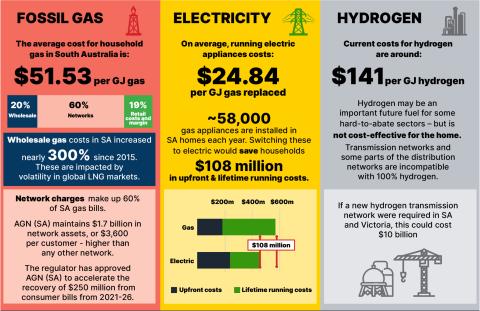Changing Course: A Clean Energy Investment Plan for Dominion Virginia Power

VIRGINIA-“The Institute for Energy Economics and Financial Analysis and Optimal Energy were asked to evaluate the potential for additional energy efficiency and renewable energy in Virginia, and to analyze the economic costs and benefits of a Clean Energy Investment Plan for Dominion Virginia Power (“Dominion” or “the Company”) in comparison to the “Preferred Resource Plan” and other alternatives evaluated in the Company’s 2012 Integrated Resource Plan (IRP). This Report presents the results of their analyses.
Key findings of the report are:
• Dominion’s current resource mix is heavily dependent on fossil–fired generation, with coal, natural gas, and oil–fired power plants providing nearly two–thirds of the energy from Dominion–owned facilities or that the Company purchases from non–utility generators or other utilities in the PJM energy market.
• Dominion’s Preferred Resource Plan would encompass more of the same, adding more than 5,000 megawatts (MW) of new or converted natural gas– fired capacity by 2027 while failing to retire any additional coal–fired units beyond those the Company currently plans to retire by 2015. As a result, as late as 2027, with the Preferred Resource Plan, coal and natural gas–fired facilities would continue to provide nearly 60 percent of the Company’s energy mix.
• Dominion’s Preferred Resource Plan is fraught with significant uncertainties and risks for ratepayers and the environment, and it fails to account for Virginia’s substantial untapped potential for energy efficiency and renewable energy resources.
• Adoption of a Clean Energy Investment Plan, while only a first step in moving the Company towards a cleaner energy future, will provide by 2027 nearly 6,800 MW of energy efficiency and renewable resources and more than 18 million megawatt hours (MWh) of clean non–emitting energy each year, at a lower cost than building one or both of the new natural gas–fired combined cycle (NGCC) power plants that Dominion plans to add by 2019.
The Clean Energy Investment Plan considered here is a moderately aggressive plan, just a first step in addressing the future welfare of Virginians. It is not an estimate of the maximum technological potential for clean energy, but rather was developed within the restrictive regulatory structure currently in place in Virginia. The steps taken in this plan are based on technologies already known, commercialized, and expected to be economically feasible within the time frame established.
The Clean Energy Investment Plan considers a limited set of changes from Dominion’s Preferred Resource Plan that are economically competitive; i.e. that would be as economic or more so than the Preferred Resource Plan based on current conditions and conservative projections of future trends. Changes in conditions such as much higher costs associated with greenhouse gas emissions might justify a much more aggressive move toward clean energy resources.
The Report’s conclusion is that Virginia has substantial untapped potential for energy efficiency and renewable energy resources, particularly solar and offshore wind. Even a moderately aggressive Clean Energy Investment Plan would produce significant benefits for Dominion’s ratepayers. However, instead of pursuing this new direction, Dominion has chosen a Preferred Resource Plan that continues its historic dependence on large central–station fossil–fired and nuclear generating units, thereby maintaining a resource strategy that is fraught with risks and uncertainties for ratepayers.”
-Wise Energy for Virginia












